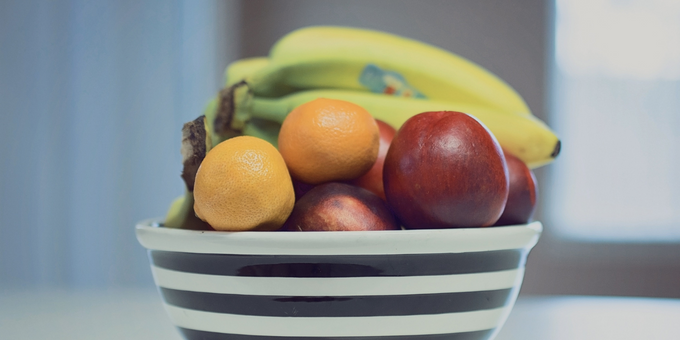We’ve all heard the dangers of fructose, and considering fruit is a common host of this sugar, you may be wondering if it’s safe to keep eating it when you’re aiming for a healthy diet. Well, don’t cross fruit off your shopping list just yet – here’s why.
There are a range of nutritional benefits to including fruit in your diet, from antioxidants to vitamins and minerals, so these aren’t the foods you’ll want to cut out when you quit sugar. You’ll be pleased to know that the fructose in fruit affects our bodies a little differently to the fructose in confectionery, soft drinks and sweeteners. But first, let’s unpack what makes fructose so dangerous.
The problem with fructose.
Sugar is made up of sucrose, which contains two other types of sugar: glucose and fructose. Unlike the former, fructose intake has been found to cause insulin resistance, the precursor to type 2 diabetes.
Here are some of the foods fructose is found in:
- Fruits and vegetables
- Soft drinks and flavoured milks
- Sauces and dips
- Sweeteners like honey, maple syrup and high-fructose corn syrup

Fructose cannot be broken down by our bodies, and the liver ends up taking on the burden of metabolising it. Here’s the rub: if we consume too much of this stuff, the liver gets overwhelmed, resulting in the development of visceral fat, inflammation and conditions ranging from heart disease to fatty liver disease.
Affecting around a quarter of the population non-alcoholic fatty liver disease is projected to become the become the leading cause of cirrhosis. There’s one study that shows 12% of kids are affected by this condition too, and unfortunately it’s not surprising, considering the mass rise in sweeteners added to processed foods. Fructose is known to cause the development of visceral fat, which wraps around the organs and leads to obesity and diabetes.
Why fructose in fruit is different.
Here’s where fruit comes in – unlike other foods with fructose, fruit has something chocolate, cookies and heavily processed goods tend to lack: fibre. This wondrous nutrient plays an essential role in helping our bodies break down sugar and slowing down our absorption of it. The result is reduced strain on the liver and, therefore, reduced visceral fat development.
The added fibre of fruit takes the edge off of fructose, in fact, if you’re going to be eating fructose, this would be one of the few healthy ways to go about it. The reason for this is that the fructose binds to the fibre in fruit, slowing the absorption rate of the sugars and taking some of the heat off our livers. Some fruits that have the lowest levels of fructose include passionfruit and pineapple.
But we’re talking about whole fruit here. Juice is another ball game entirely – unlike its whole counterpart, juice is stripped of fibre and ends up giving you all the negatives that come with fructose. To make matters worse, the concentration of sugars is through the roof when compared to whole fruit.
If you’re looking to keep the fructose to a minimum, here are a few of the lowest fructose fruits to load up on:
- Pineapple
- Rockmelon
- Passionfruit
- Peaches
- Apricots

Having a little trouble staying in control of your health journey? Join us for the 8-Week Program where we’ll be quitting sugar and taking our lives back into our own hands. When you sign up with us, you’ll have access to clear-cut meal plans, community support and exclusive access to our sugar-free content. Here’s what’s on offer:
- 8 weeks of meal plans and shopping lists.
- 90+ member-only recipes.
- Community forums to share your journey.
- Support and expert guidance from the I Quit Sugar team.
If you’re ready to ditch sugar and the host of maladies that come with it – JOIN NOW!






Leave a comment (all fields required)